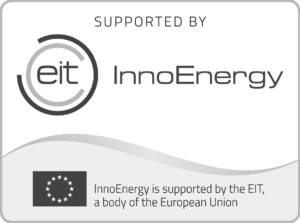01.03.2021
Kadi Villers: innovation activities are chaotic in many companies

Tehnopol offers its companies the opportunity to conduct a free Innovation Health Check (hereinafter IHC) survey. IHC is an enterprise innovation audit that identifies opportunities for strategic development, resource savings, opportunities for product development or implementation of a new business model, and recommendations for finding partners. The audit focuses on the company’s innovation culture, understanding of the business environment, shaping growth strategy and vision, structure, people. Tehnopol’s innovation manager Kadi Villers told us more about innovation and IHC.
Are there any typical mistakes that companies tend to make when trying to support innovation in their company?
Based on my communication with companies, there are indeed some things that stand out that do not give hope for good results. For example, the fact that no particular person is appointed to handle innovation projects and innovations, this task and responsibility is shared between different people to handle on the side of their main job. Inevitably, this often means setting priorities in a situation where the main job takes up most of the person’s time and attention, everything else remains to be done when time is left. It is also noticeable that in many companies innovation activities take place either as one-off projects or in other chaotic ways, and there is a lack of a structured and consistent approach. Unresolved issues are how to ensure that new ideas reach the organization continuously, both internally and externally, how to process these ideas within the company, how to ensure that there are sufficient resources at the right time to implement ideas worth developing, and what to do with the ideas that were put aside. Lastly, I would point out that although the situation seems to be improving in this respect, a large number of companies are still engaged in innovation only in-house, and opportunities for cooperation with external partners are gradually opening up.
How exactly does the IHC work?
The IHC brings together a cross-section of the company’s representatives, both hierarchically and functionally, and, through their discussion, provides an insight into the organisation’s performance in terms of whether all the prerequisites for innovation have been created. Six thematic areas, such as processes, leadership style or resources, are discussed in blocks of topics, and participants must reach a consensus on each answer. The audit will result in a report highlighting the company’s strengths and weaknesses, with recommendations on how to overcome these bottlenecks, as well as benchmarking the results of other European companies that have completed the IHC.
To whom would recommend the IHC?
In practice, we have realized that IHC is not suitable for small and micro-enterprises, as their nature and small size means that many processes, communications and activities work in their own way, and this makes sense in their context. Therefore, we recommend IHC for companies with at least 50 employees. There are no restrictions or precepts in the areas of activity. Therefore, we recommend an audit to all medium-sized companies that want to approach innovation activities more consciously and thoughtfully, try to create structures and processes for continuous innovation, and want to get an estimate of whether their company has or still needs to create conditions conducive to innovation
What are some of the key values of IHC?
One important aspect of the audit is whether different employees perceive the company’s situation and problems in the same way or whether the company already needs to address issues such as how to improve information exchange and ensure adequate communication for all, how to involve necessary employees or how to give and take responsibility outside the management. According to the participants, they value the fact that the audit openly addresses topics that are not considered important in everyday work, because it is assumed that they are equally clear to everyone anyway – and then it turns out that they are not – or simply are not considered necessary to discuss with other colleagues from other fields but then it turns out that they have worthwhile ideas or input on these topics.
We asked Gaspar Anton, founder of EyeVi Technologies, a 3D mapping company who passed the IHC, and Tarvo Õng, CEO of Fusebox, a virtual power plant developer, how the audit process went for them.
According to Anton and Õng, the audit process was inclusive. “Together with the team, we solved issues concerning the core of the company. Members had to reach a consensus by giving scores on various issues. There were many healing discussions, “said Õng. Anton added that their company’s team could think in a very open manner. The duration of the whole process was approximately two to three hours.
The auditors agreed that the recommendations were relevant and necessary. Anton points out that there is always room for development. “In general, we had everything well in the company and the team was unanimous, but it is also very important to know that. There are always points for development, “said Anton. Commenting on who should go through the process, Õng found that it benefits all companies that have established their company’s main processes.
More information about Innovation Health Check can be found here!












